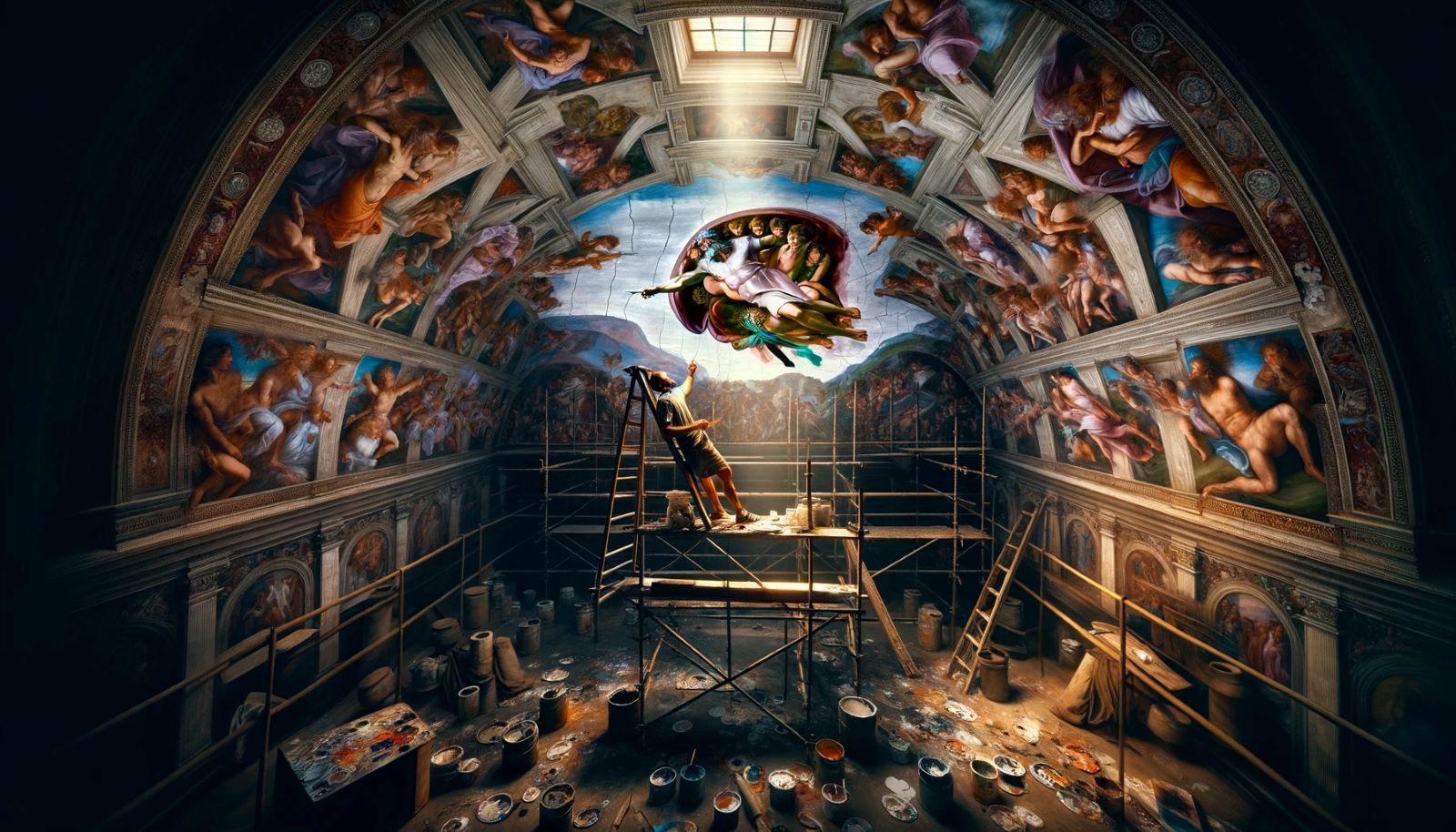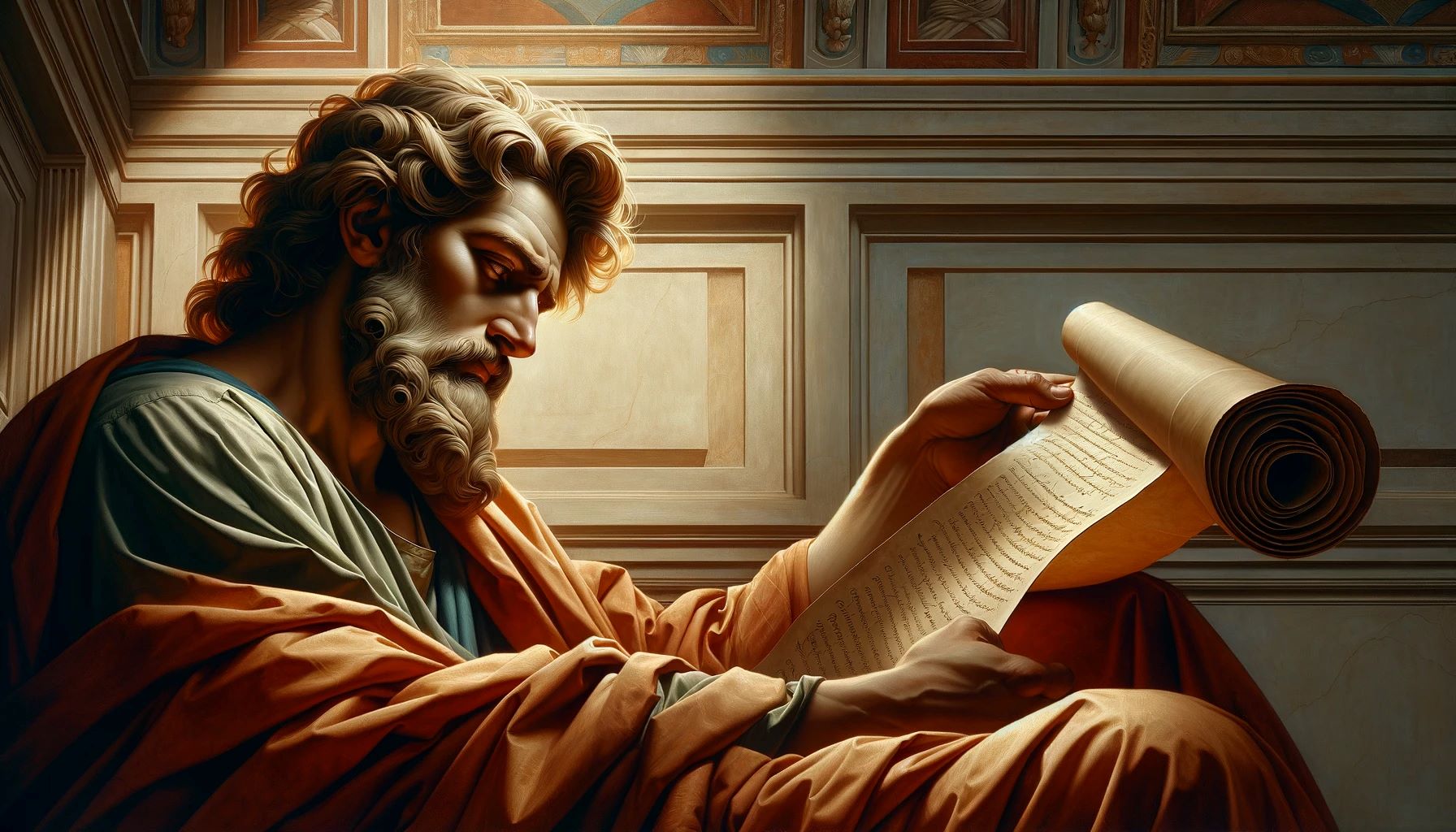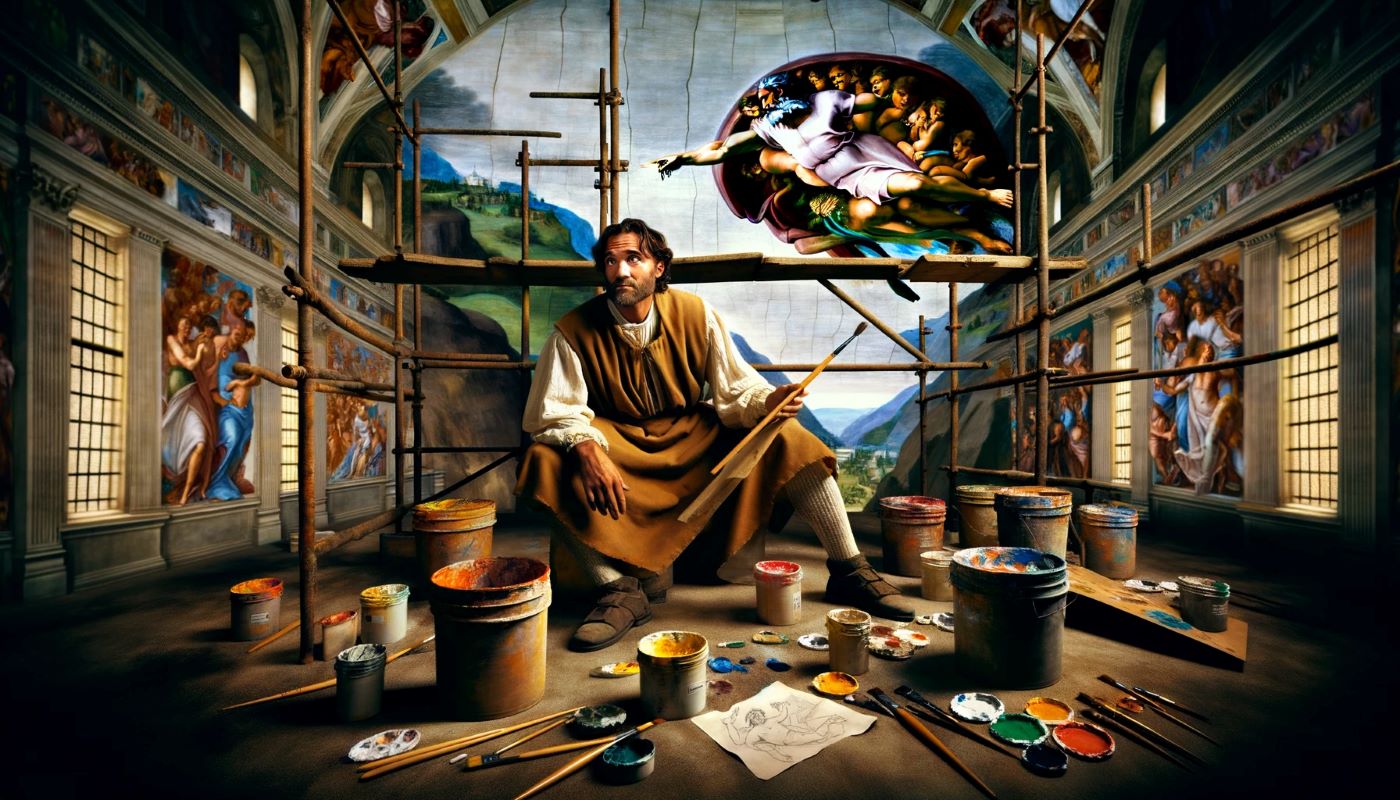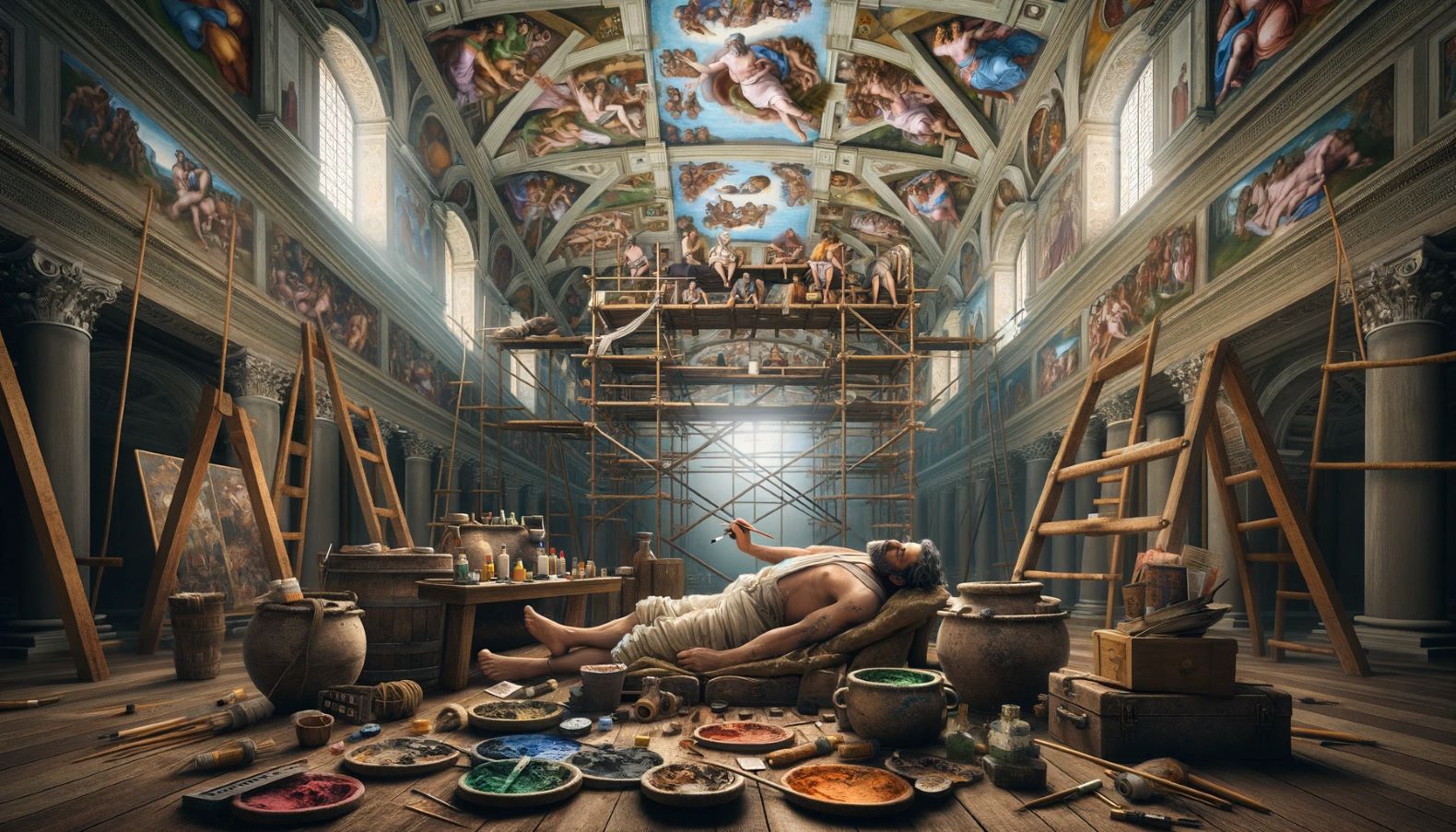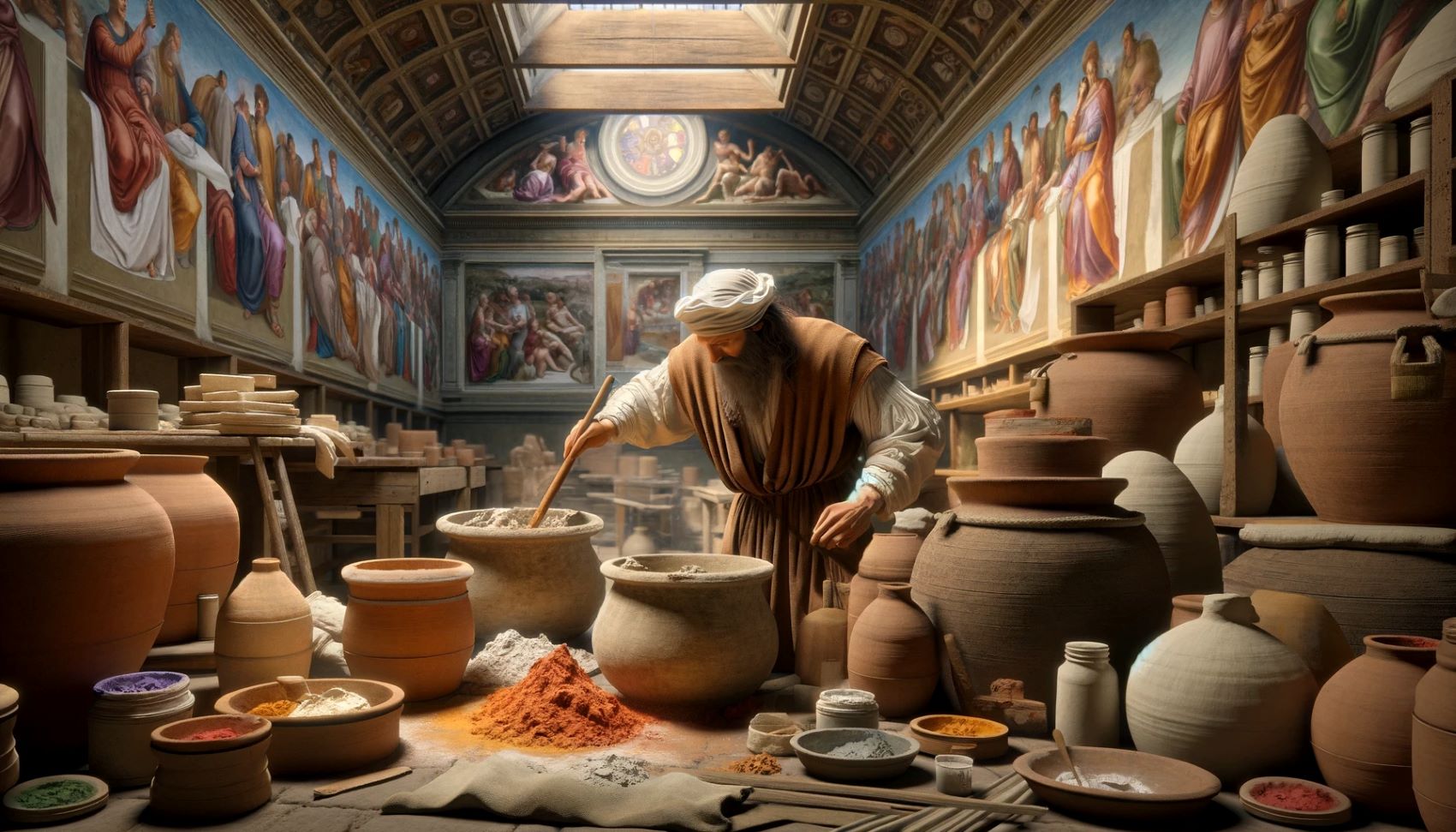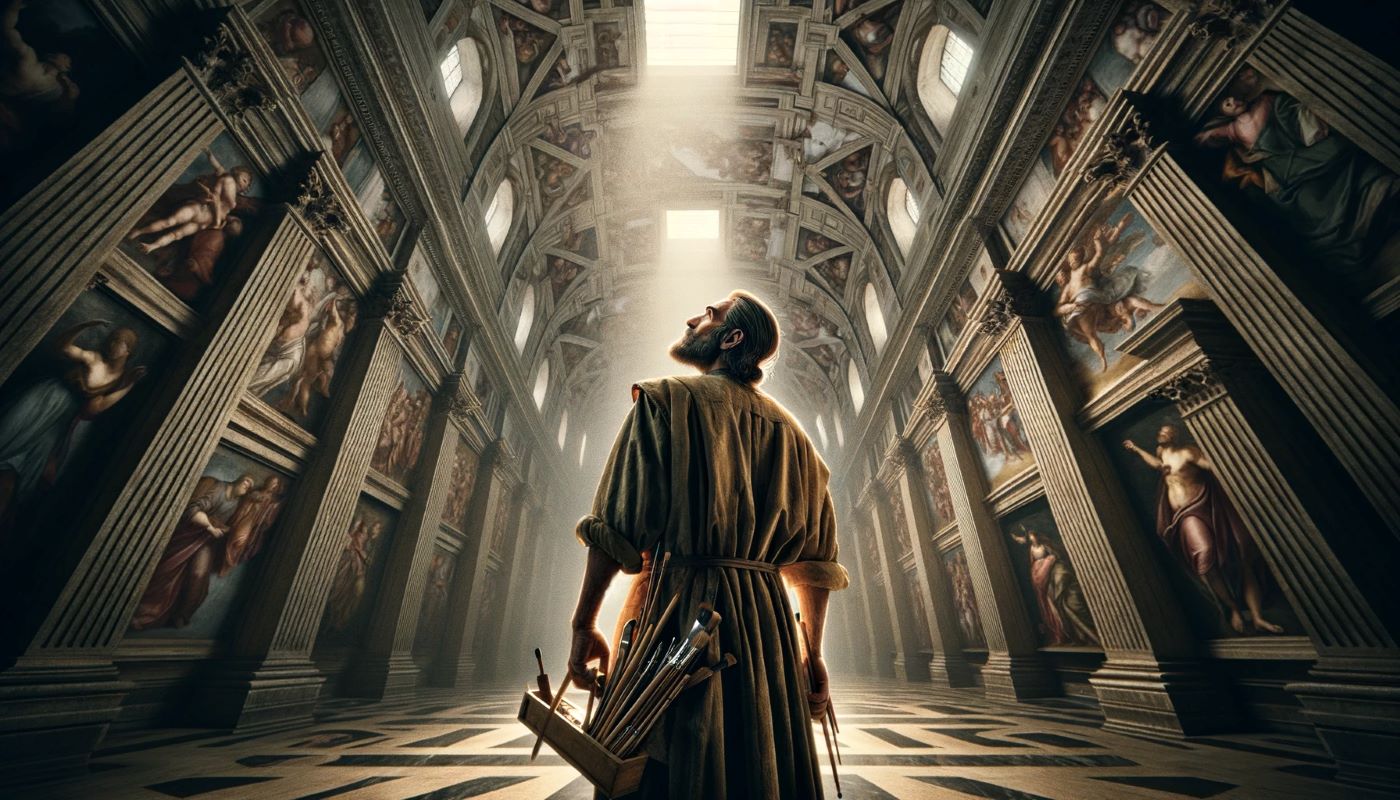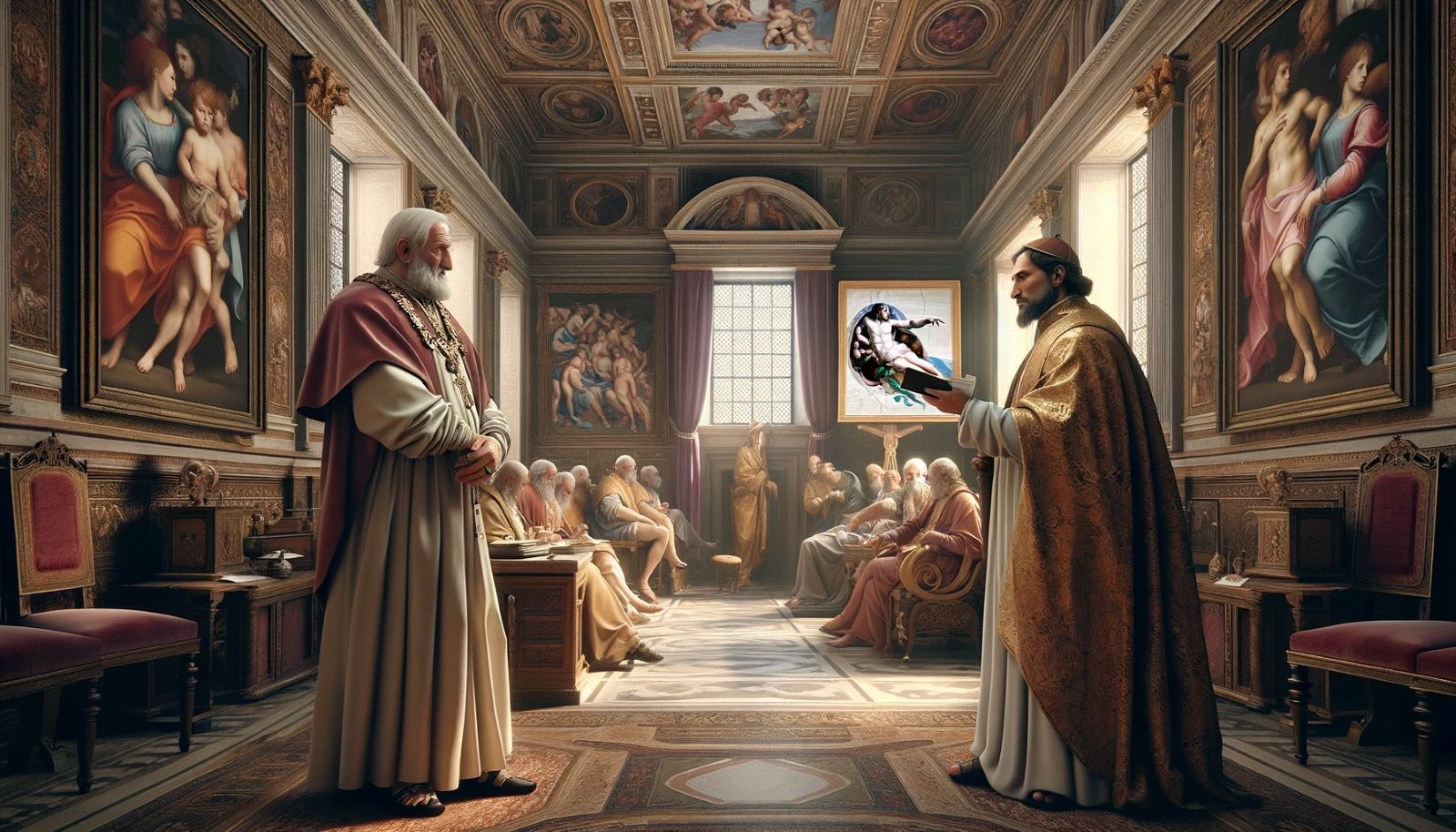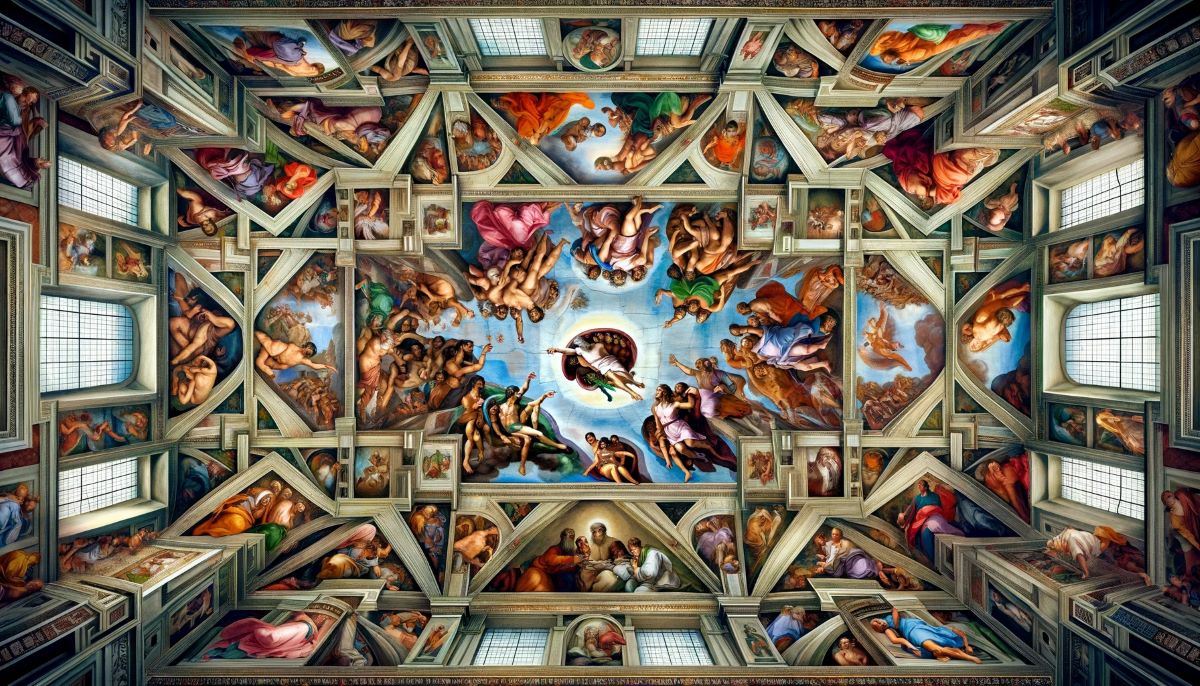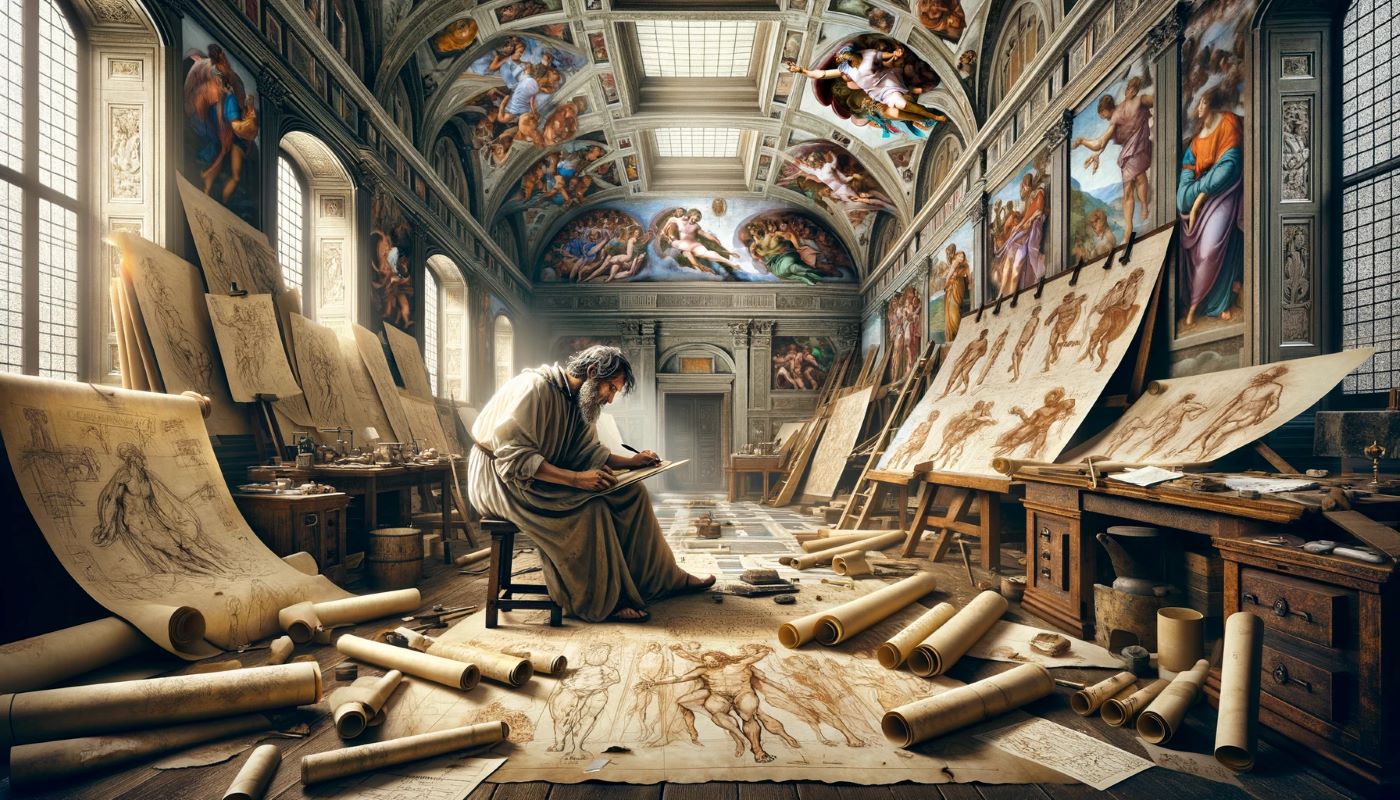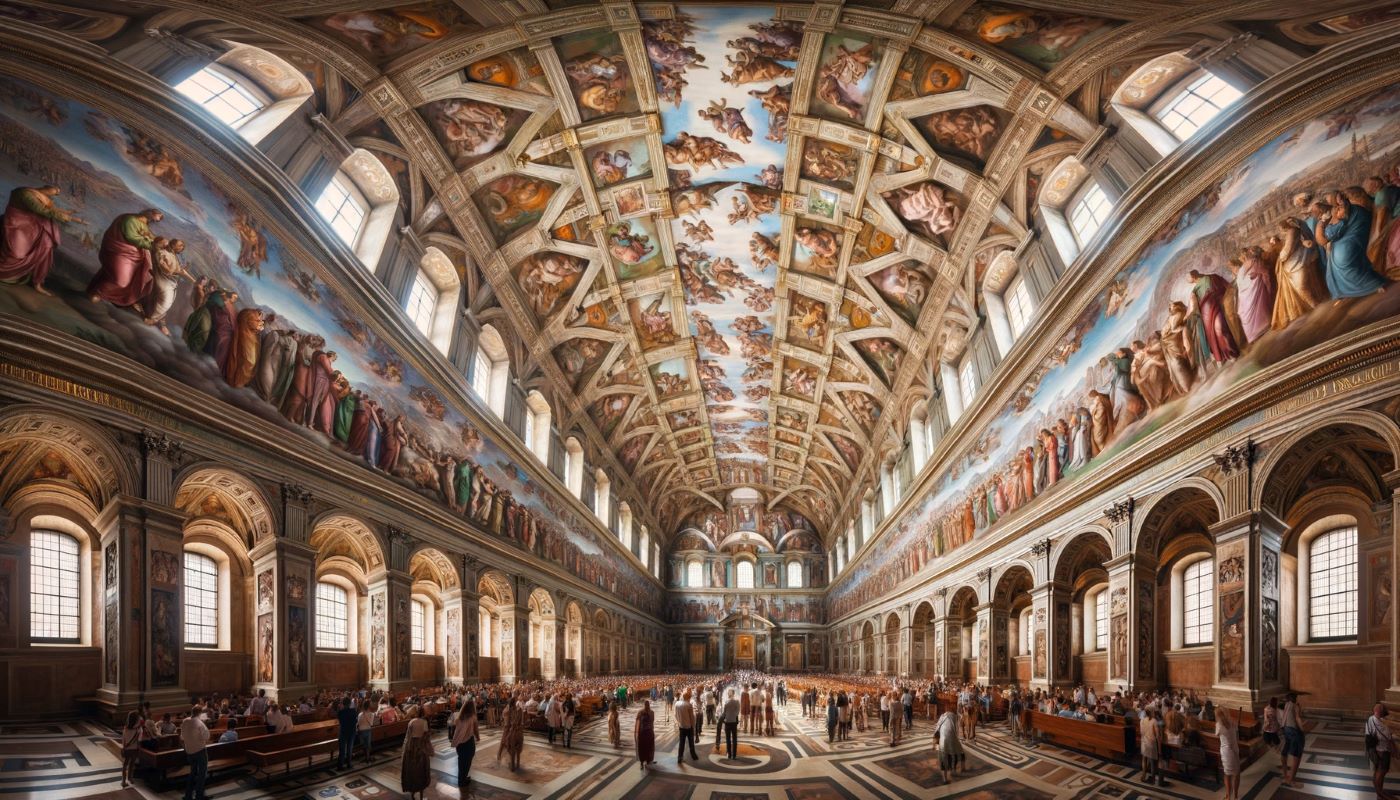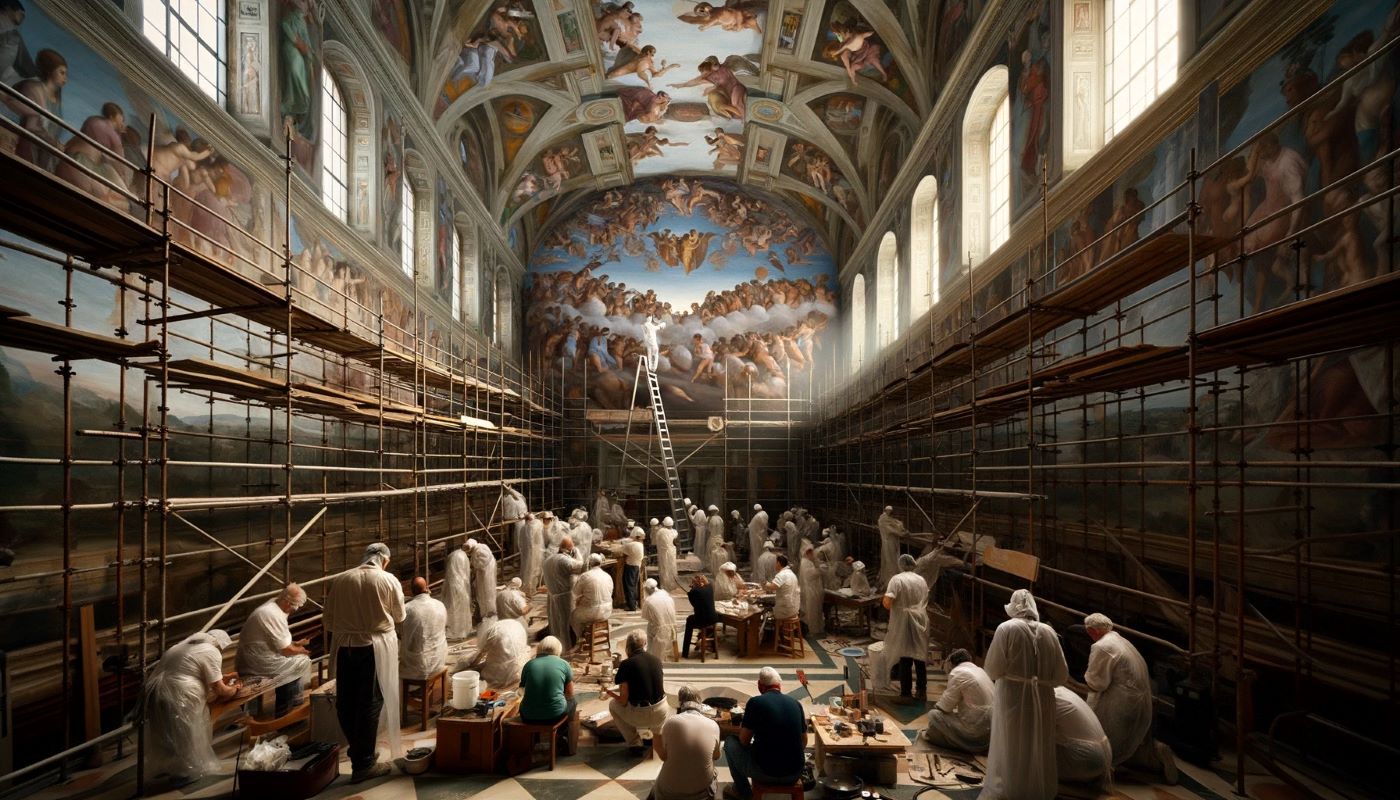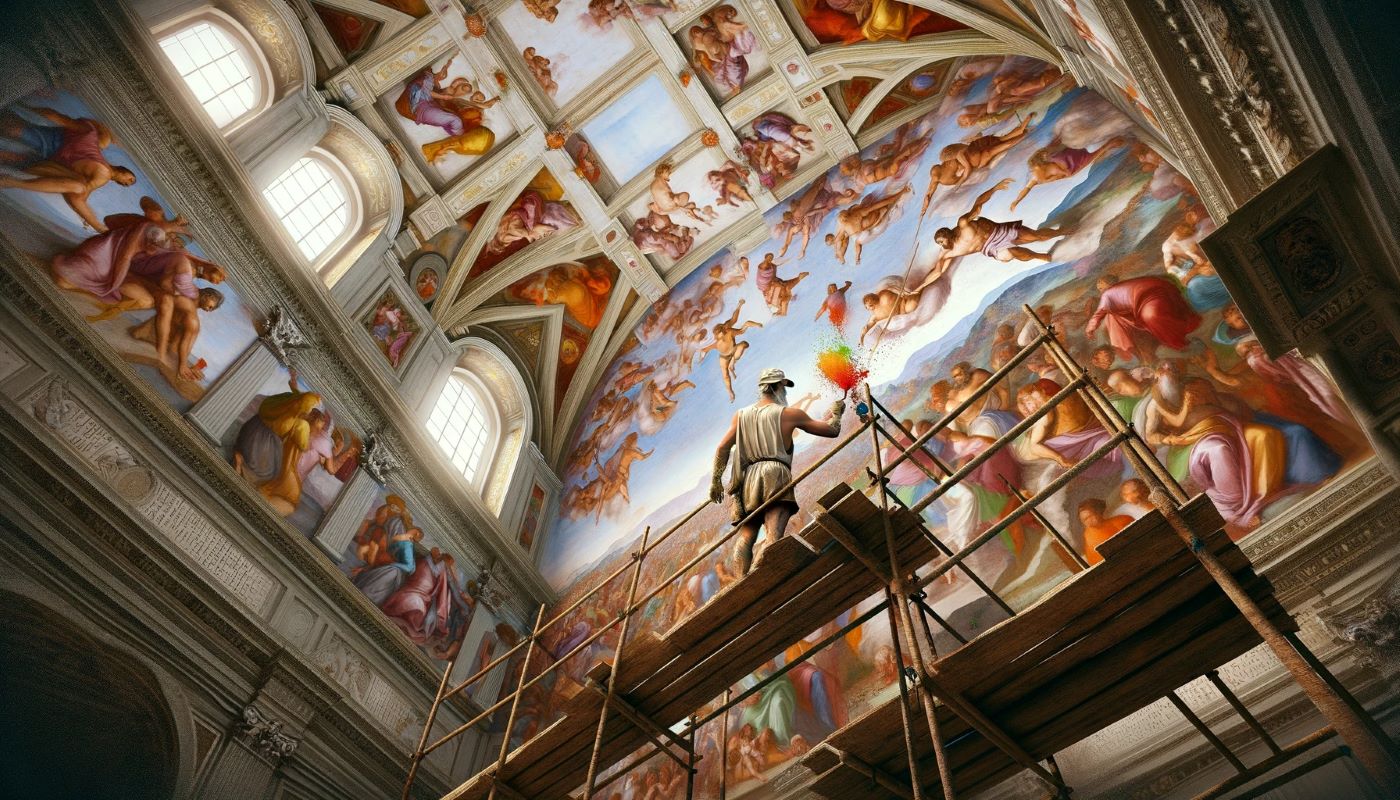Home>Arts and Culture>How Did Michelangelo Paint The Sistine Chapel
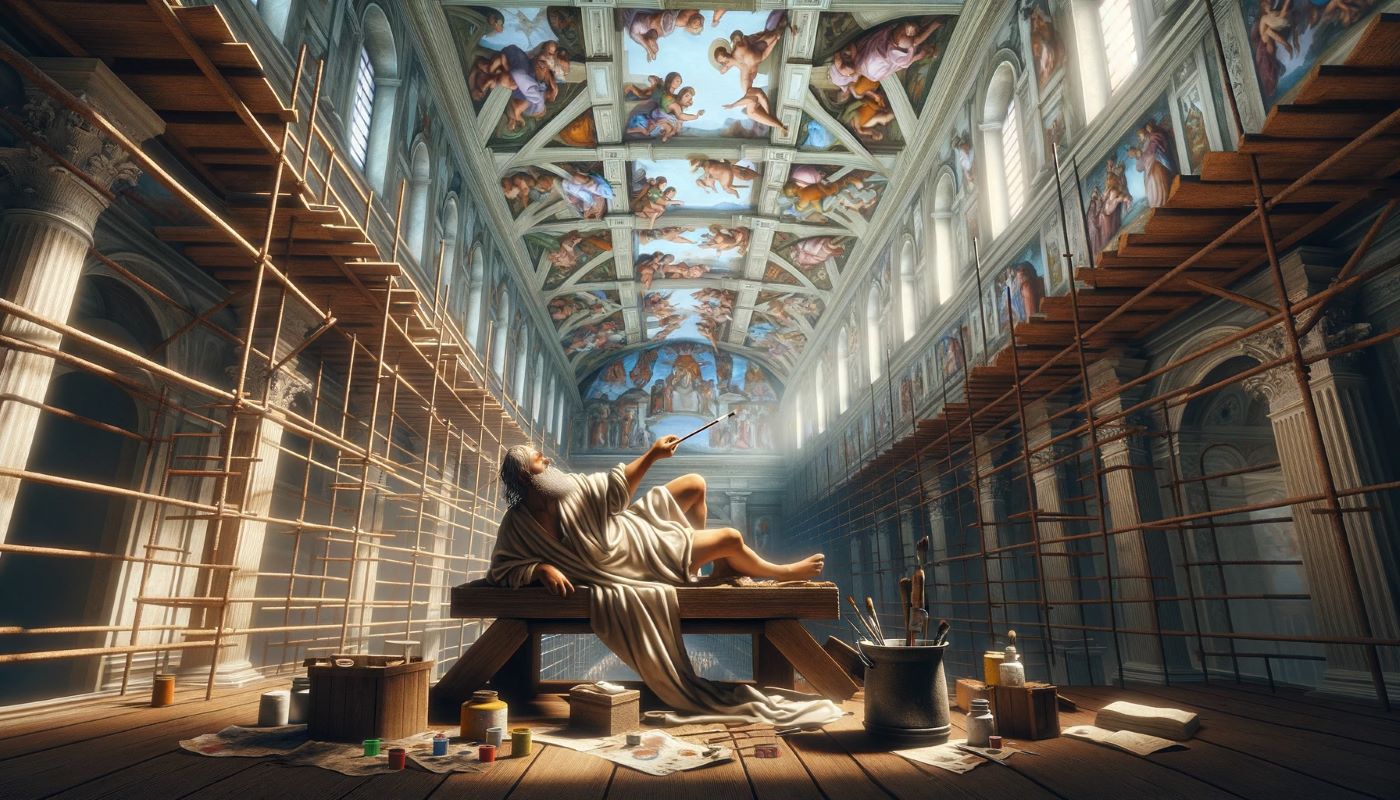

Arts and Culture
How Did Michelangelo Paint The Sistine Chapel
Published: March 4, 2024
Peter Smith, Editorial Director at Christian.net, combines deep insights into faith, politics, and culture to lead content creation that resonates widely. Awarded for his contributions to religious discourse, he previously headed a major organization for religious communicators, enhancing dialogue on faith's societal impacts.
Discover the artistic genius of Michelangelo and his techniques in painting the iconic Sistine Chapel. Uncover the secrets behind this masterpiece in arts and culture history.
(Many of the links in this article redirect to a specific reviewed product. Your purchase of these products through affiliate links helps to generate commission for Christian.net, at no extra cost. Learn more)
Table of Contents
Introduction
How did Michelangelo paint the Sistine Chapel? This question has intrigued art enthusiasts and religious scholars for centuries. The process of creating such a masterpiece, especially one of such monumental scale and significance, is a topic of fascination and wonder. Michelangelo's work on the Sistine Chapel is not only a testament to his artistic genius but also a profound expression of religious devotion and storytelling. In this article, we will delve into the meticulous preparation, technique, and the enduring legacy of Michelangelo's awe-inspiring artwork in the Sistine Chapel.
Michelangelo's Preparation and Technique
-
Extensive Study of Human Anatomy: Before embarking on the monumental task of painting the Sistine Chapel, Michelangelo dedicated years to the study of human anatomy. His deep understanding of the human form allowed him to depict figures with unparalleled accuracy and dynamism.
-
Preparation of the Surface: Michelangelo's technique involved preparing the ceiling of the Sistine Chapel with a special layer of plaster, known as "intonaco." This layer had to be applied quickly before painting, requiring meticulous planning and precision.
-
Use of Scaffolding: To reach the towering ceiling, Michelangelo designed an elaborate scaffolding system. This allowed him to work from a close distance to the ceiling, ensuring that every stroke of his brush was deliberate and controlled.
-
Innovative Painting Technique: Instead of traditional fresco painting, Michelangelo employed a unique method known as "buon fresco." This involved applying pigments onto freshly laid plaster, allowing the colors to be absorbed and become an integral part of the surface.
-
Meticulous Attention to Detail: Michelangelo's dedication to detail was unparalleled. He worked tirelessly, often lying on his back for hours on end, to bring his vision to life. His commitment to perfection is evident in the intricate details of each figure and scene.
-
Limited Palette: Despite the vibrant and rich colors of the Sistine Chapel, Michelangelo's palette was surprisingly limited. He used a select few pigments, yet through his mastery of shading and blending, he achieved a remarkable range of tones and hues.
-
Emotional and Spiritual Depth: Beyond technical skill, Michelangelo infused his artwork with profound emotion and spiritual depth. Each figure on the ceiling tells a story, conveying a powerful narrative that resonates with viewers on a deeply human level.
Michelangelo's meticulous preparation and innovative technique set the stage for the creation of one of the most iconic and enduring works of art in history. His dedication to perfection and his profound understanding of human anatomy elevated the Sistine Chapel to a level of artistic and spiritual significance that continues to inspire awe and admiration to this day.
The Iconic Ceiling of the Sistine Chapel
The ceiling of the Sistine Chapel stands as a testament to Michelangelo's unparalleled artistic vision and technical mastery. Spanning over 5,000 square feet, the ceiling is adorned with a breathtaking array of frescoes that depict scenes from the Book of Genesis, including the iconic portrayal of the Creation of Adam. The central nine panels of the ceiling feature intricate depictions of biblical narratives, each meticulously crafted to convey a sense of movement, emotion, and divine grandeur. The composition of the ceiling is a symphony of color, form, and storytelling, inviting viewers to immerse themselves in the rich tapestry of religious and artistic symbolism. From the creation of light to the expulsion from the Garden of Eden, every section of the ceiling is a masterpiece in its own right, collectively forming a visual narrative that transcends time and speaks to the depths of human experience.
The architectural design of the Sistine Chapel's ceiling, with its series of architectural elements and painted architectural details, creates an illusion of depth and grandeur. Michelangelo's skillful use of perspective and foreshortening gives the impression that the painted figures and scenes are part of a larger, three-dimensional space, drawing the viewer into the heart of the biblical stories. The interplay of light and shadow further enhances the dramatic impact of the artwork, evoking a sense of divine presence and otherworldly beauty.
One of the most iconic and enduring images from the Sistine Chapel ceiling is the Creation of Adam, where the outstretched hands of God and Adam epitomize the divine bestowal of life and knowledge. This singular depiction has become a universal symbol of human potential, spiritual connection, and the quest for understanding the mysteries of existence. The sheer scale and emotional resonance of this masterpiece encapsulate the essence of Michelangelo's artistic genius and his ability to capture the profound essence of religious faith and human aspiration.
The Sistine Chapel's ceiling is not merely a work of art; it is a transcendent expression of faith, creativity, and the enduring power of visual storytelling. Its impact on the world of art and religious symbolism cannot be overstated, as it continues to inspire and captivate countless visitors who gaze in awe at its timeless beauty. The ceiling stands as a monument to the intersection of artistic brilliance and spiritual devotion, inviting all who behold it to contemplate the profound mysteries of existence and the boundless potential of the human spirit.
The Last Judgment
The Last Judgment, located on the altar wall of the Sistine Chapel, is a monumental fresco that depicts the second coming of Christ and the final judgment of humanity. Painted by Michelangelo later in his career, this awe-inspiring masterpiece is a testament to the artist's evolving style and his profound exploration of spiritual themes. The composition of The Last Judgment is a dramatic portrayal of divine justice, salvation, and damnation, with a striking emphasis on the human form and the tumultuous emotions that accompany the apocalyptic event. At the center of the fresco, Christ is depicted in a commanding pose, surrounded by saints, angels, and the righteous ascending to heaven, while the damned are consigned to the depths of hell. The dynamic energy and emotional intensity of The Last Judgment convey a sense of urgency and existential reckoning, inviting viewers to contemplate the eternal consequences of their actions and beliefs. The fresco's visceral portrayal of the human condition and the eternal struggle between good and evil resonates with a timeless and universal significance, making it a profound and enduring work of religious art.
Legacy of Michelangelo's Sistine Chapel Artwork
The legacy of Michelangelo's Sistine Chapel artwork extends far beyond the confines of its physical location. It has left an indelible mark on the world of art, religion, and culture, shaping the way we perceive and appreciate the intersection of creativity and spirituality. The enduring impact of Michelangelo's masterpiece can be observed in the following aspects:
-
Artistic Influence: The Sistine Chapel ceiling and The Last Judgment have served as a wellspring of inspiration for countless artists across the centuries. From the Renaissance to the present day, Michelangelo's innovative techniques, mastery of human anatomy, and profound storytelling have set a standard for artistic excellence and creativity. The dynamic compositions, emotive figures, and intricate details of the Sistine Chapel continue to influence and inform artistic expression, serving as a touchstone for aspiring artists and seasoned masters alike.
-
Religious Symbolism: Michelangelo's artwork in the Sistine Chapel has become synonymous with the visual representation of religious narratives and themes. The vivid portrayal of biblical stories, the divine-human connection, and the eternal struggle between good and evil has deeply resonated with religious communities and spiritual seekers. The Sistine Chapel's imagery has permeated religious iconography, serving as a source of contemplation, meditation, and theological reflection for individuals of diverse faith traditions.
-
Cultural Icon: The Sistine Chapel has transcended its role as a place of worship to become a global cultural icon. Its significance extends beyond the realm of art and religion, capturing the imagination of people from all walks of life. The imagery from the Sistine Chapel has been reproduced, reinterpreted, and referenced in various forms of popular culture, from literature and film to advertising and fashion. Its enduring presence in the cultural landscape testifies to the universal appeal and timeless relevance of Michelangelo's artistic vision.
-
Touristic Attraction: The Sistine Chapel, with its awe-inspiring artwork, has become a magnet for tourists and pilgrims from around the world. Its status as a UNESCO World Heritage site further underscores its significance as a cultural and historical treasure. The influx of visitors to the Sistine Chapel not only attests to the enduring allure of Michelangelo's artwork but also fosters a sense of global interconnectedness and appreciation for humanity's artistic achievements.
-
Educational Resource: The Sistine Chapel serves as an invaluable educational resource, offering insights into art history, religious symbolism, and the creative process. Scholars, students, and enthusiasts alike continue to study and analyze the Sistine Chapel's artwork, unraveling its layers of meaning, technical brilliance, and historical context. The enduring legacy of Michelangelo's masterpiece ensures that it will remain a cornerstone of art education and scholarly inquiry for generations to come.
In essence, the legacy of Michelangelo's Sistine Chapel artwork is a testament to the enduring power of artistic expression and its capacity to transcend time, culture, and belief systems. Its impact reverberates through the annals of art history, inspiring awe, contemplation, and a profound appreciation for the boundless potential of human creativity.
